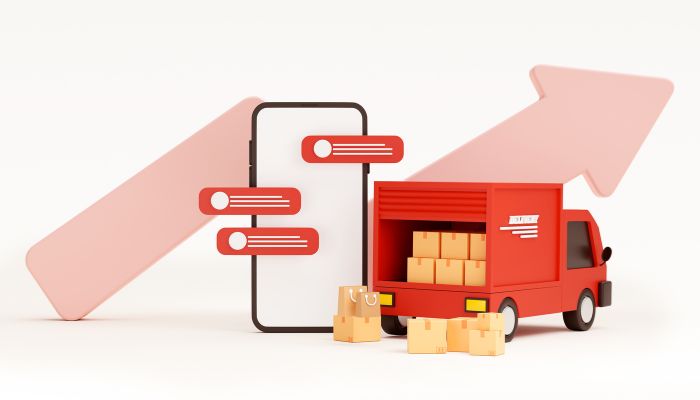The future of work is in a state of unprecedented transformation. It cannot be said that the economic crisis from the coronavirus pandemic is definitely behind us. However, the harbinger of reparation lies in how the nature of work will adapt and continue. The phase of reincarnation via a flexible future of work has surely begun.
The hybrid work model
The future of work can be encapsulated as the flexibility of work location, work timings, face-to-face interactions, and collaboration such that the physical proximity is not required at all times to achieve business ends.
Job portals such as Naukri offer clear comparisons that job listings in 2020 are more open to work-from-home options and remote-work options than they were in 2019. The increase in flexibility is 3-4 times greater. Even traditionally in-office operations such as sales, customer service, and business development verticals now operate with a hybrid of in-office and remote-work arrangements.
From the perspective of jobseekers too, this trend is apparent with five times more candidates looking for jobs with the keyword ‘work-from-home’ appended. One in every three candidates appears to have a search intent of finding out the nature of work and whether it’ll allow flexible locations, more than any other benefits.
You might also be interested to read: The Promise And Potential Of Blended Working
India’s young and quick-learning workforce leverage technology and software tools. They work from homes in their native towns and cities, staying productive and gainfully employed. After some initial hiccups and unforeseen snags in staffing and scheduling, the future of work moved away from a trial-and-error scenario to a smooth hybrid work model.
How the hybrid work model helps India Inc. make the best of a bad situation
Although the figures mentioned above have only 5-6 months on the timeline, what counts are the other advantages of a hybrid work model:
- An in-office workday curated and planned well ahead crosses off several items on the to-do list for the entire hierarchy
- On work-from-home days, savings on the commute time, energy lows, and lethargy can be used toward productive work, ideation, and planning
- Workers are obliged to become more self-sufficient and self-aware in this future of work model. They identify gaps, learn to negotiate and delegate, and also learn new skills making them “managers of one”
- With the greater flexibility to shift personal and family commitments around to suit work schedules, the stresses of urban living in these unprecedented circumstances become easier to weather
For the world of work, this shift in the mindset begins with some adjustment in attitudes. But it has a great bearing on worker engagement and motivation levels. For this reason, the future of work empowering a remote workforce wins greater mileage and favor.
The current constraints are the bedrock for a whole new genesis: location-independent future employment
The one upside of restricted social interaction is that it has opened up organizations and conservatives to think beyond the cubicle. While the success of the remote work model is no small proof, the biggest win is the attitude-shift.
Teaching, Banking and Financial Services, and Publishing were among the most unwavering verticals preferring traditional desk operations with the physical presence of workers. This has begun to change, with e-commerce models being adapted to these sectors to generate more employment at a critical time.
Organizations that struggled at the various stages of the coronavirus lockdown made almost immediate decisions to tap into virtual interfaces. SaaS (software-as-a-service) packages took prime positions to shift offices and meeting spaces to the virtual space.
Distributed workforce models have proved in the past six months that meetings, strategizing and brainstorming, and conclusive execution, even to the point of implementing organization-wide change, is possible. Remote workers coordinate just as well as, or even better than teams present in-person. The savings from time wasted at the water-cooler are now well-spent on family/personal time. Productive time at the desk enjoys more focus and garners higher performance metrics.
Is work-from-home the future Of work?
With months of data to go by, workers and managers alike realize that a mix of work locations such as a home-based desk, a remote location that inspires creativity and change of scene such as a café, and in-office work can be ideal. The novelty as well as the mental detachment from stress the worker feels at each of these locations is different.
CHROs and HR generalists agree on an individual contributor’s capacity to fulfill a job role and reach self-actualization in this setting. A team leader’s supervisory ability receives a shot in the arm and the whole range of tasks derive strength from the hybrid model. In keeping with the information age, the adoption of artificial intelligence in the workplace can help temper the overload of stimuli and help the worker do the task at hand well.
AI-powered tools blend well into the future of work
To collate strengths and make work manageable in the distributed workforce model, talent needs to be hoisted with discipline and purpose. This is just what AI tools do in a variety of impactful to innocuous methods.
AI tools secure the future of work by monitoring work hours, measuring productivity, and assigning ratings for performance. Even from the induction stage, these tools can assess candidates’ abilities for possible remote-work positions (even if the recruitment and selection procedures themselves are carried out virtually).
Some of the AI tools currently making waves with professionals are Salesforce, Amazon, Google Suite, and aggregators like Uber and Zomato. In addition, Zoom and WeWork have revolutionized the work model, making collaboration possible and reliable. The workforce in India and global Indians across the board are familiar with the convenience and merits of using AI-powered tools such as chat bots. It is not hard for them to see that essential metrics such as measuring sales numbers, assessing buyers’ journeys, tracking customer relationship management figures, and client data becomes seamless with the help of AI.
AI-powered tools fit right into the blended model where the future of work is carried out from myriad locations in addition to the office. Timely recognition of this from the administration and leadership is one of the reasons Indian corporates’ performance continues to be vibrant during crisis times.
References:
- Why the future of work might be ‘hybrid’ | Worklife BBC.com | Christine Ro | Aug 31, 2020
- Hiring for work-from-home jobs surges in India: Report | The Economic Times | Indo-Asian News Service | Aug 25th, 2020
- The future of work in the new normal: hybrid, flexible, more productive | Your Story | Debolina Biswas | Aug 5th, 2020
- Covid-19 impact: Oyo adopts ‘hybrid workplace model’ for Indian employees | Business Standard | Sai Ishwar | July 21, 2020
- 4 Ways AI Helps Managers Increase Remote Workforce Productivity, Technology & Innovation | Business2Community | Jody Glidden | Mar 25, 2020
You might also be interested to read:
Related Topics:






